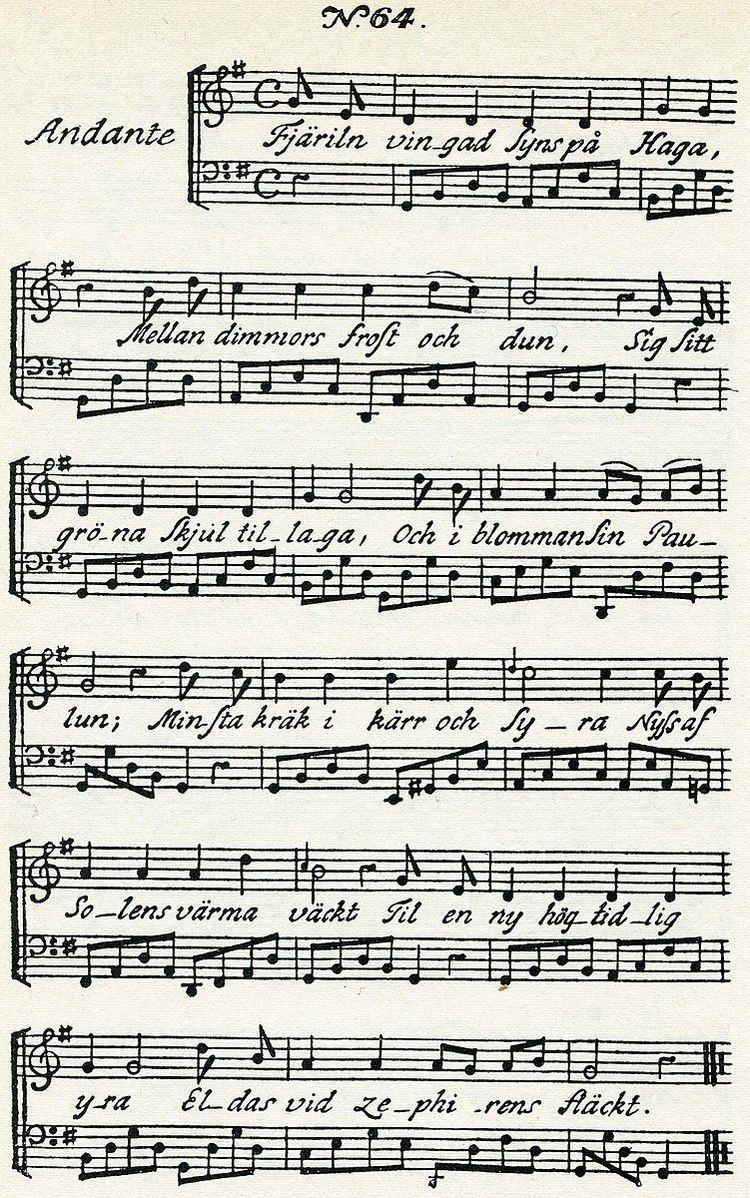 | ||
Fjäril'n vingad syns på Haga (The butterfly wingèd is seen in Haga) is one of the most popular of Carl Michael Bellman's collection of songs called Fredmans sånger, published in 1791, where it is No. 64. Many Swedes know the song by heart.
Contents
Context
Carl Michael Bellman is the central figure in Swedish song, known for his 1790 Fredman's Epistles and his 1791 Fredman's Songs. He played the cittern, accompanying himself as he performed his songs at the royal court.
Jean Fredman is a fictional character and the supposed narrator in Bellman's epistles and songs, based on a real watchmaker of Bellman's Stockholm. The epistles paint a picture of the demimonde life of the city during the eighteenth century, where strong drink and beautiful "nymphs" like Ulla Winblad create a rococo picture of life, blending classical allusion and pastoral description with harsh reality.
Song
The song is dedicated to Captain Adolf Ulrik Kirstein who at the time was Bellman's landlord in Klarabergsgatan, Stockholm.
Fjäriln vingad is in 4/4 time and is marked Andante. The rhyming pattern is the alternating ABAB-CDCD.
The song describes Haga Park, the attractive natural setting of King Gustav III's never-completed Haga castle just North of Stockholm.
Reception
Fjäriln vingad remains popular in Sweden, and is one of the best-known and most often sung of Bellman's songs. It is included in a list of songs that "nearly all [Swedes] can sing unaided". A chime of bells in Solna, near the Haga park described in the song, rings out the melody every hour.
An early recording was made by Gustaf Adolf Lund in Stockholm in 1904. Johanna Grüssner and Mika Pohjola recorded it in a medley with "Glimmande nymf" on their song album Nu blir sommar in 2006. In the Zecchino d'Oro in 2005 it was recorded with the Italian title Il mio cuore è un gran pallone.
The song been translated into English by Henry Grafton Chapman, Charles Wharton Stork, Helen Asbury, Noel Wirén, and Paul Britten Austin. It has been recorded in English by William Clauson, Martin Best, Barbro Strid, and Martin Bagge. Martin Best's 1983 release on the Nimbus label is currently available through digital download services.
